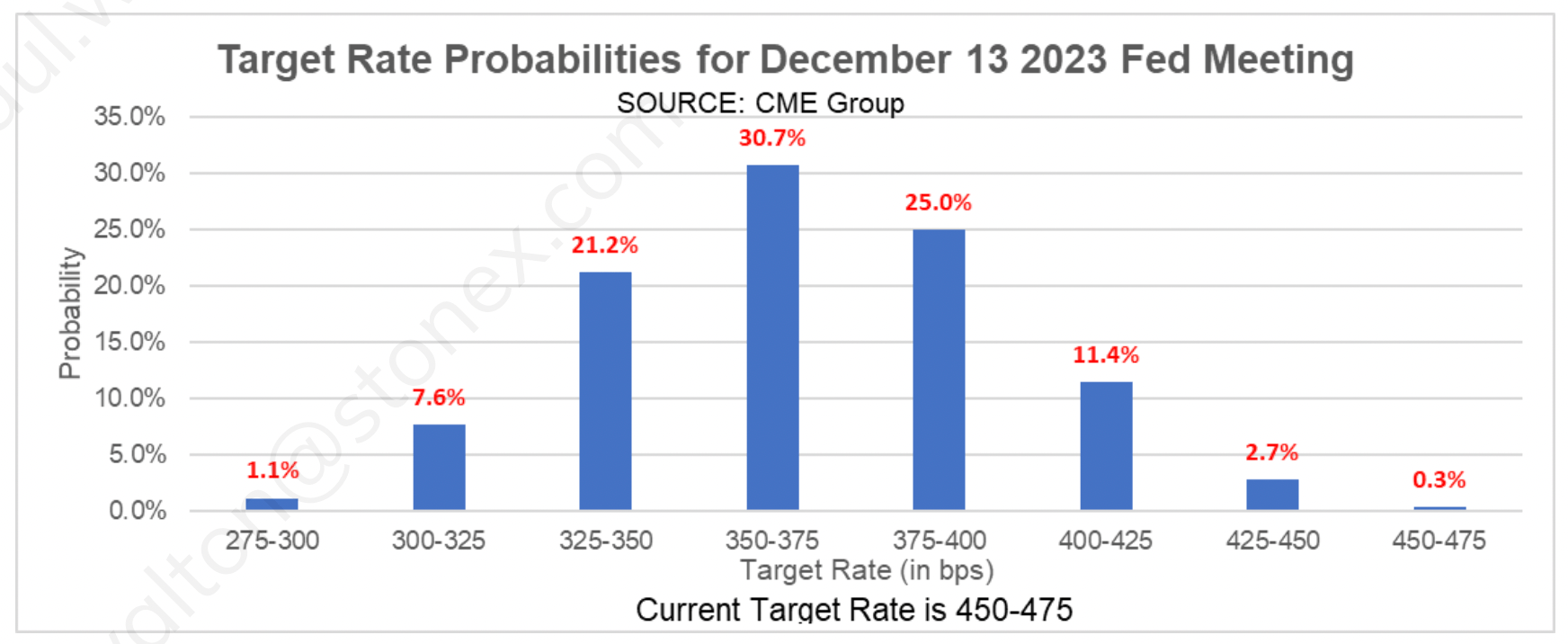
Arlan Suderman discusses his belief that the greater threat to our economy is for inflation to become deeply engrained, if the Fed backs off its focus on this problem, setting in motion a series of events that ends up creating long-term pain for everyone. It’s worth publishing his thoughts at more length. Today’s producer price index provides additional evidence of declining inflationary pressures, which will be welcome to the Fed, but inflation is still a major threat.
Low interest rates not the norm …
Today's benchmark rate is just above 4.5%, the highest in 15 years but not necessarily ‘normal.’ Arlan notes that we spent most of the previous 35 years above 5%. Further, he argues that rising interest rates do less to cause problems than they do to expose problems. In many cases, the answer is more responsible decision marking, not more regulation. Zero interest rates lead to a lot of mistakes that don't get exposed until rates rise.
… And rates stayed too low for too long
Arguably, the Federal Reserve added to problems when it kept rates too low for too long, and then talked only of transitory inflation that contributed to more bad decisions. Arlan believes that Fed has largely got it right over the past year, but perhaps waited too long to get started. Remember, the Fed was still actively easing a year ago with rates near zero, even as inflation was on its way up.
Market forecasts baking in lower rate hikes
Fed fund futures at one point this morning put the larger odds on zero rate hikes at next week's meeting, although it is now trading 54% odds of a 25-basis point rate hike. The graphic below reflects Fed fund futures expectations of the benchmark rate being as much as 100 basis points lower by the end of the year. The market is assuming that things will become so bad in the months ahead that the Federal Reserve will have no choice but to slash interest rates. That’s a major change of outlook, and perhaps dangerous, Arlan concludes. The Fed shrank back in early 1980, necessitating it to eventually take rates to new highs at 22% by the end of the year. Fed Chair Jerome Powell has stated that he doesn't want to make that mistake again. Retirement may be looking very attractive to Powell right now, considering the decisions he and the board face in the coming days.
Fed Funds Expected Rates Derived from Futures Contracts

Source: CME Group, StoneX.
Markets tumble on bank failure fears
- Broad stock indices were down 1.5% by midday, with the tech heavy NASDAQ down almost twice that
- The VIX INDEX, Wall Street’s fear index, traded as high as 30, reflecting elevated fear
- The dollar index is sharply higher near 105, close to its 106 year-to-date high
- Yields on 2- and 10-year Treasuries are trading near 3.81% and 3.41%, respectively
Oil down, soft commodities up
- Crude oil prices sold off to $66.5, breaking chart support levels
- Corn and wheat prices saw modest gains, with corn trading fresh demand following recent losses
Inflation data weaker, retail sales pretty flat
- The producer price index (PPI) rose 4.6% year-on-year in February, down from 6.0% the previous month and well-below analyst expectations of 5.4%
- The PPI was cooler than expected, contracting 0.1% month-on-month in February, less than the 0.3% growth expected by analysts, and a marked difference from the 0.7% growth seen the previous month
- Core PPI, excludes the more volatile food and energy sector, was up 4.4% year-on-year in February, down from 5.4% the previous month and under analyst expectations of 5.2%.
- Core PPI was flat in February – no inflation – versus the 0.5% growth seen the previous month and versus analyst expectations of 0.4%
- Retail sales were weaker than expected in February, leading many to believe that we’re heading into a recession – the bottom line here is that retail sales were very constant in February when looking beyond vehicle sales and declining gasoline prices
- Retail sales fell by 0.4% month-on-month in February, down from 3.2% gains the previous month and under the 0.3% expected
- Retail sales minus vehicles only fell 0.1% month-on-month in February, down from 2.4% gains the previous month and under the expected 0.2%
- Furthermore, retail sales minus vehicles and gas were flat in February, after gaining 2.8% in January and much better than the 0.9% decline expected in February.
Analysis by Arlan Suderman, Chief Commodities Economist
Contact: Arlan.Suderman@StoneX.com


